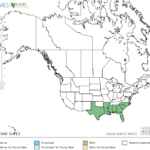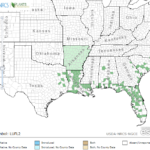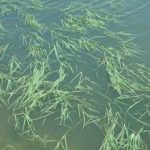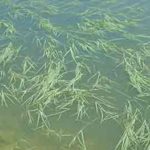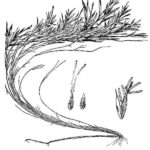Luziola fluitans
USDA, NRCS. 2018. The PLANTS Database (http://plants.usda.gov, 28 March 2018). National Plant Data Team, Greensboro, NC 27401-4901 USA.
Illustration: USDA-NRCS PLANTS Database / Hitchcock, A.S. (rev. A. Chase). 1950. Manual of the grasses of the United States. USDA Miscellaneous Publication No. 200. Washington, DC.
What is Southern Watergrass?
Physical Characteristics
- Mostly submerged
Leaves:
- Floating near surface or usually emerging less than an inch above the water
- 0.78-2.5 inches long
- 0.08-0.2 inches wide
Flowers:
- Loose branching
- Grow in clusters
- 0.2-0.78 inches long
- Few-flowered
- Spikelets have one flower each
Stem:
- Hollow Stem
- 1-3.25 feet long
- About 0.02 inches thick
- Somewhat branching
Roots:
- Rooted at most nodes
- Bottom-rooted
Where Does it Grow?
Southern watergrass can be found in ponds, lakes, and slow-flowing streams.
Pros and Cons of Southern Watergrass
Muskrats, nutria, and rabbits graze on southern watergrass. Submerged portions of all aquatic plants provide habitats for many micro and macro invertebrates. These invertebrates in turn are used as food by fish and other wildlife species (e.g. amphibians, reptiles, ducks, etc.). After aquatic plants die, their decomposition by bacteria and fungi provides food (called “detritus”) for many aquatic invertebrates.
